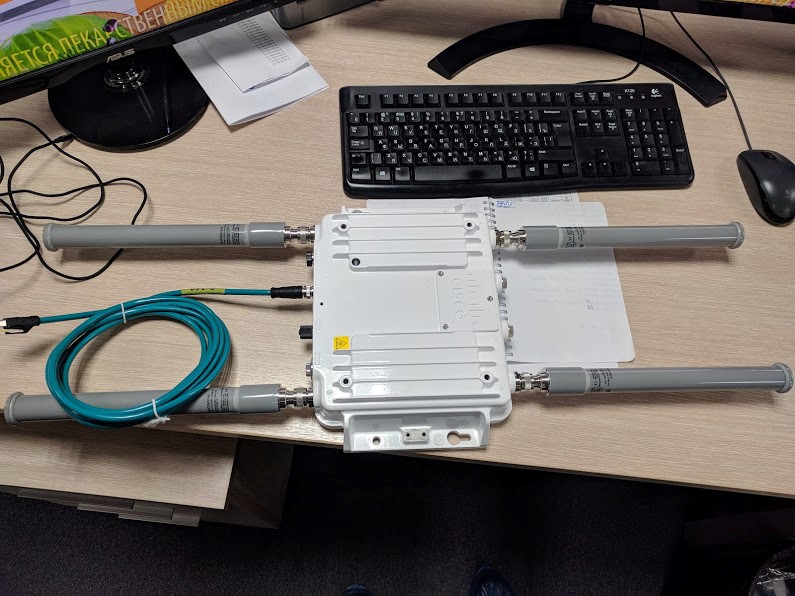
It all started with the fact that we were searched and dressed. Then, at the exit from the surveyed room, stripped and washed. Because we could sprinkle one of the substances that the plant uses, and then put it on the skin. Or lick each other, I do not know.
The second surprise was that the same room and a number of critical "clean zones" were sheathed with a chic PARTECO stove. This is a special stove with explosion-proof and chemical-protective properties. 4.5 centimeters of composite materials, of which
20 (!) Mm are excellent shielding aluminum. For comparison: body armor for protection against machine guns and sniper rifles begin with 8 mm thick plates.
Through such a plate of radiation, airport radar can penetrate, but not a Wi-Fi network. The door is the same. No windows. No seams - pressure drops are assumed.
In these conditions, we were already, it seems, the sixth who came to the radio survey. The previous five contractors (including manufacturers of Wi-Fi-equipment) put their most powerful radiating antenna on the stove, cut in a maximum, made a measurement in the room, shrugged their shoulders and left.
But we are very persistent. And very cunning.
About persistence
The radio survey revealed three zones: an office (dense coverage, interference), a warehouse (about it further, there is its own atmosphere) and production. On the production there are several premises that are sheathed here with this magic "armor plate". In fact, it is needed to prevent biological and chemical threats.
Over almost all production there is a technical floor (something like a false ceiling), on which you can walk. Different equipment is located there. It was assumed that we would place our access points there and would be a direct effort of will to punch the slab into these enclosed spaces.
Naturally, those who tried to do this before us used powerful antennas and ran up against the fact that:
- Even a powerful antenna does not break through the plate with its signal.
- The response equipment (weak) certainly does not penetrate the plate when it sends data from the room.
- On the technical floor such interference reigns that you can shoot the documentary "Nightmares of the signalman."
As I said, we are very insidious. Therefore, we proposed to drill the plate and mount the antenna there in a special sealant, “close to the fighting one”. We, of course, immediately refused. But we paid attention to the inputs of the power cable, to the installation of fire alarm sensors and to the installation of video surveillance - there are exactly the same protected devices and bullet-proof sealant. After quite a long negotiation, we were met. I must say that we did a telephony for this customer, a local network and equipped the data center, so there was already a credit of trust for the engineers.
Installation in production
Here is the space behind the ceiling:
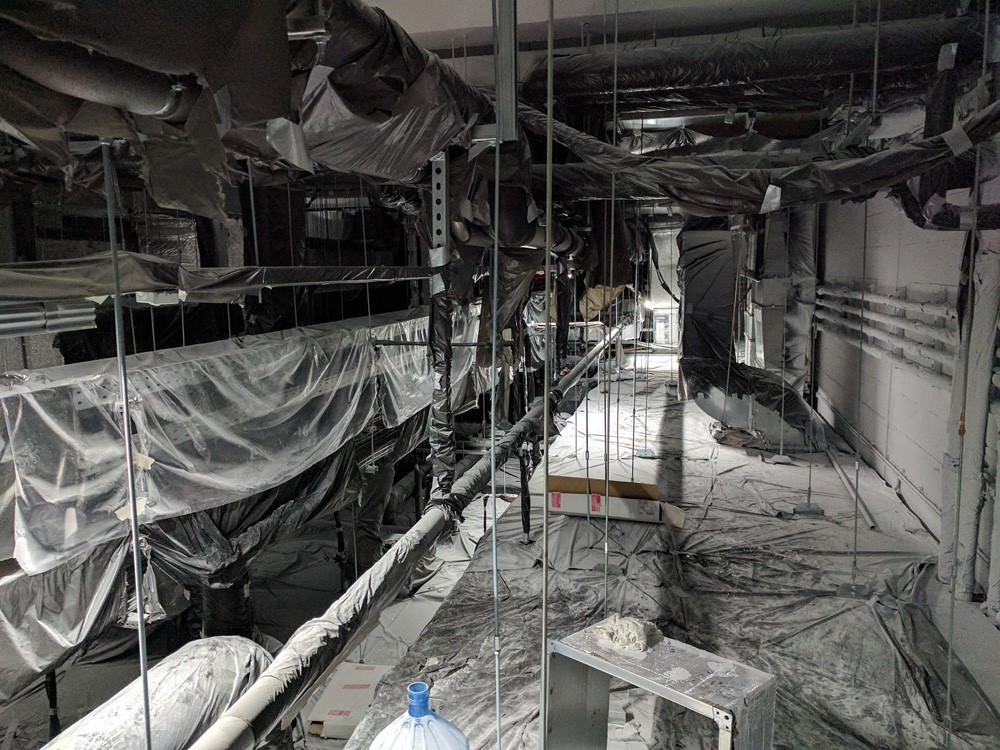
Yes! In addition to signal propagation, there were strict requirements that all metallized rooms are regularly cleaned. A person comes with a sink and under pressure just washes everything.
In general, in these very super rooms we decided to do this:
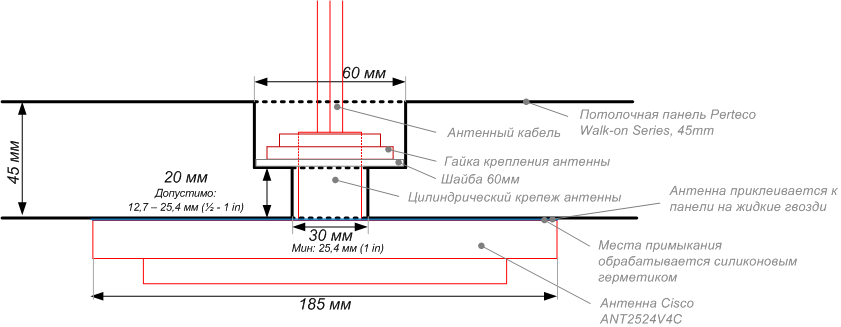
It turned out like this indoors:
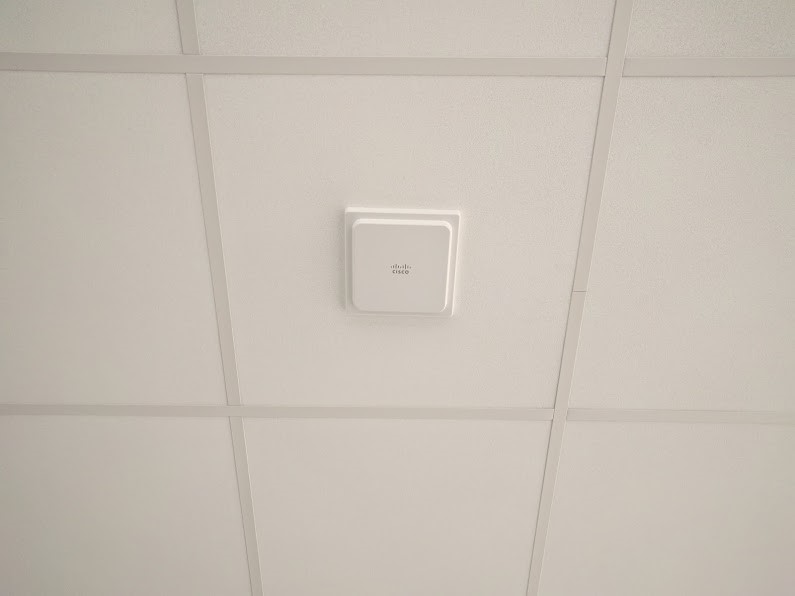
When mounting points, it was important not to disturb the sealing of the room, since in laboratory rooms pressure was artificially injected so that when opening the doors, the air would only go out of the rooms and polluted air would not enter. There is even a whole NF story about this clean-area effect in data centers, where only admins were saved across the planet. So, our tests are fine. Pharmacists will also be saved.
The device itself is in the photo at the beginning of the post.
The rest of the production passed without incident. There were also special points where explosive substances were stored. There is a separate building where dangerous compounds were stored. There were requirements for industrial points. One of them is in the picture above.
Office
In the office, everything is relatively standard. But the density of consumers and the fact that they have a lot of mobile terminals, made us pay special attention to radio surveys. As a result, we modeled the optimal density of points. Ziskovskie points for the office are able to perfectly see each other and not interfere, plus in them an array of antennas, so that the point as a result is able to direct the radiation pattern to consumers.
If more points were poked, there would be a co-channel interference and a decrease in speed, failures, reconnects and other pleasures of life. Less speed.
Stuck less points, there would be uncovered corners of rooms.
Here is a radio survey:
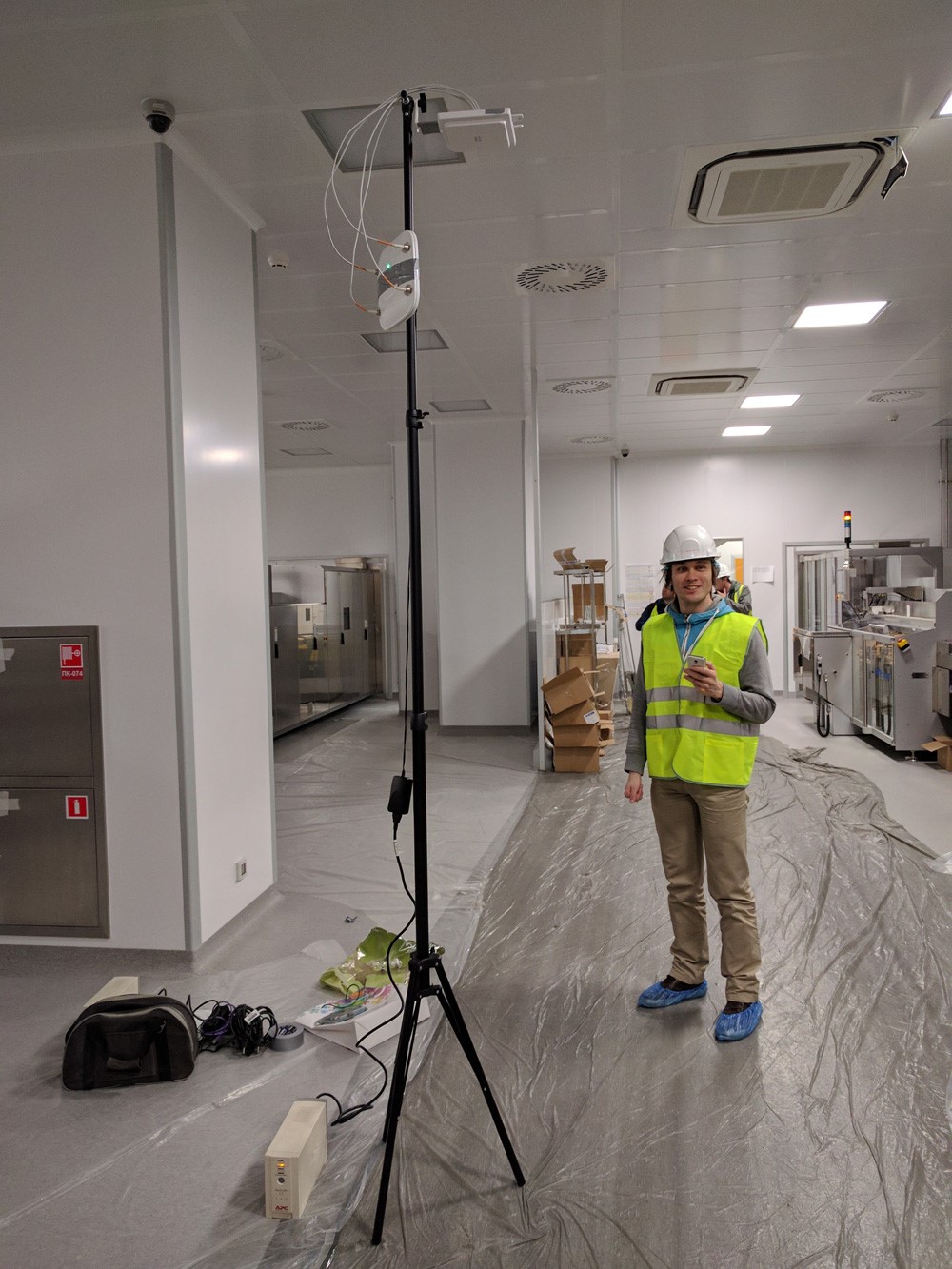
But part of the load testing:
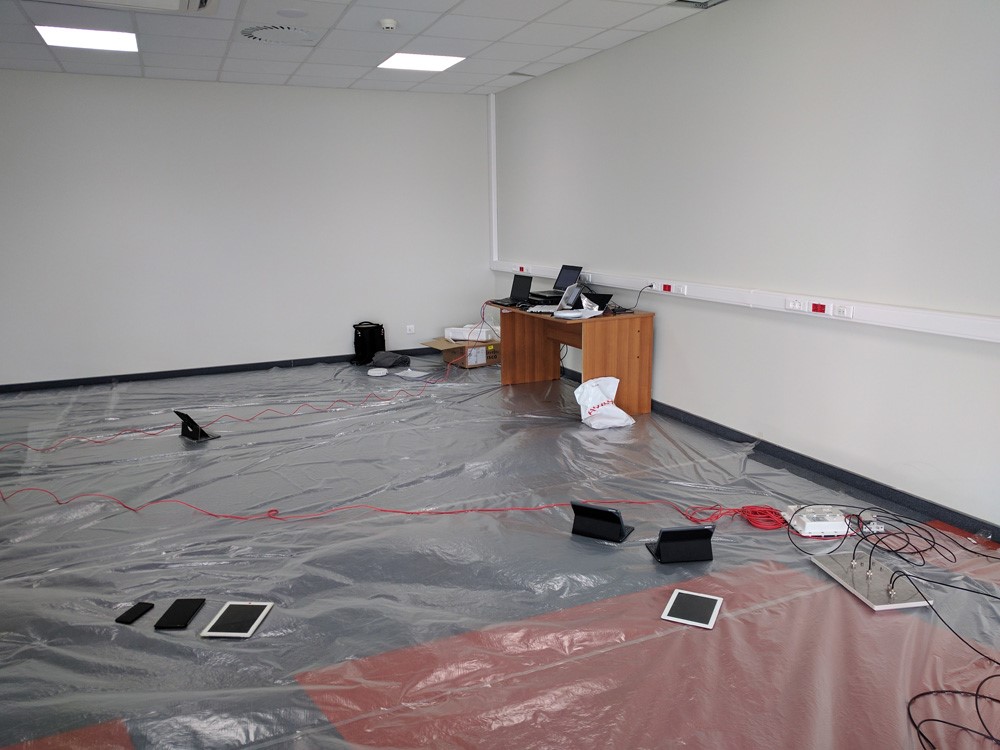
Stock
The warehouse at the time of testing was empty:
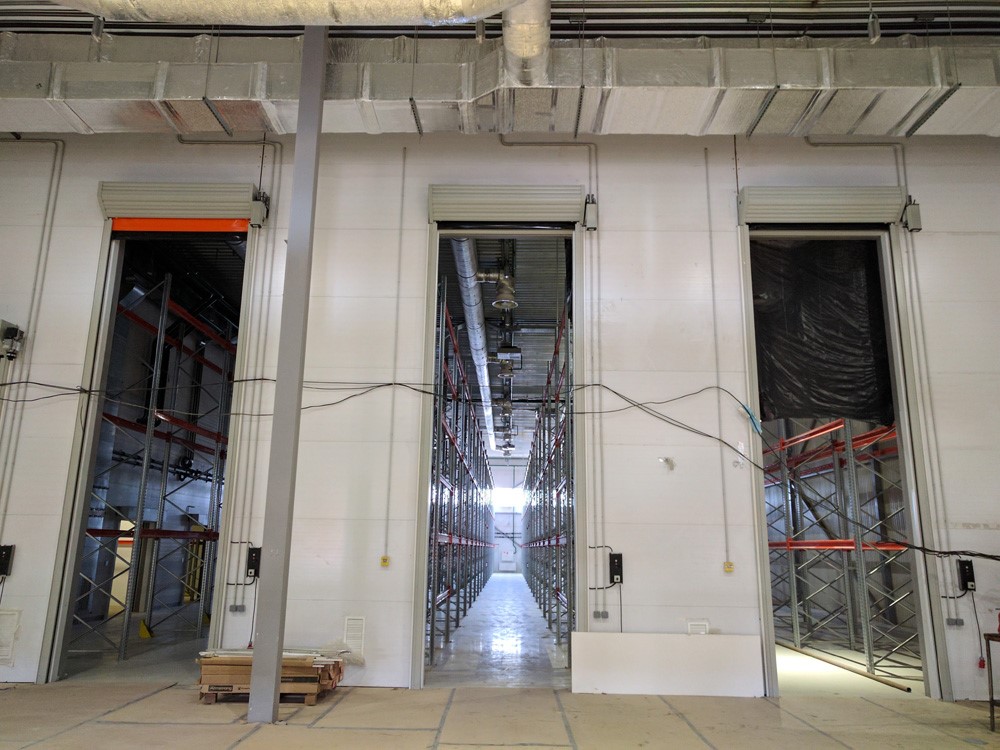
But we learned that they were going to store there, and yes, these are finished products. That is the pill. The pills themselves are almost radiotransparent, but their blisters are foil. That is, if you look at the picture, you will see not just signal absorbers, but the most real anechoic cameras: they have a similar architecture. They are still testing radio terminals.
Therefore, our solution is directional antennas in the aisles above.
Like these ones:
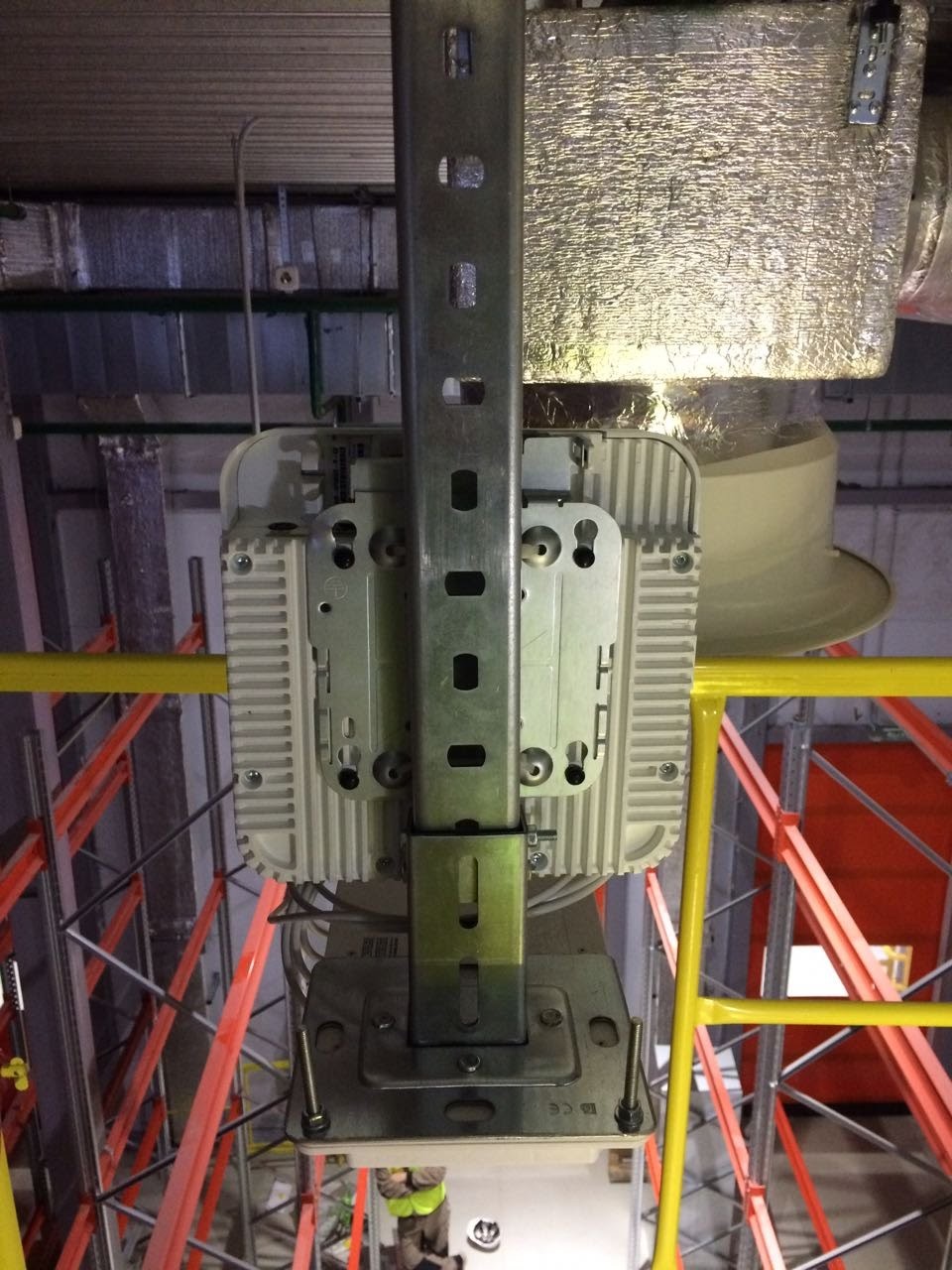
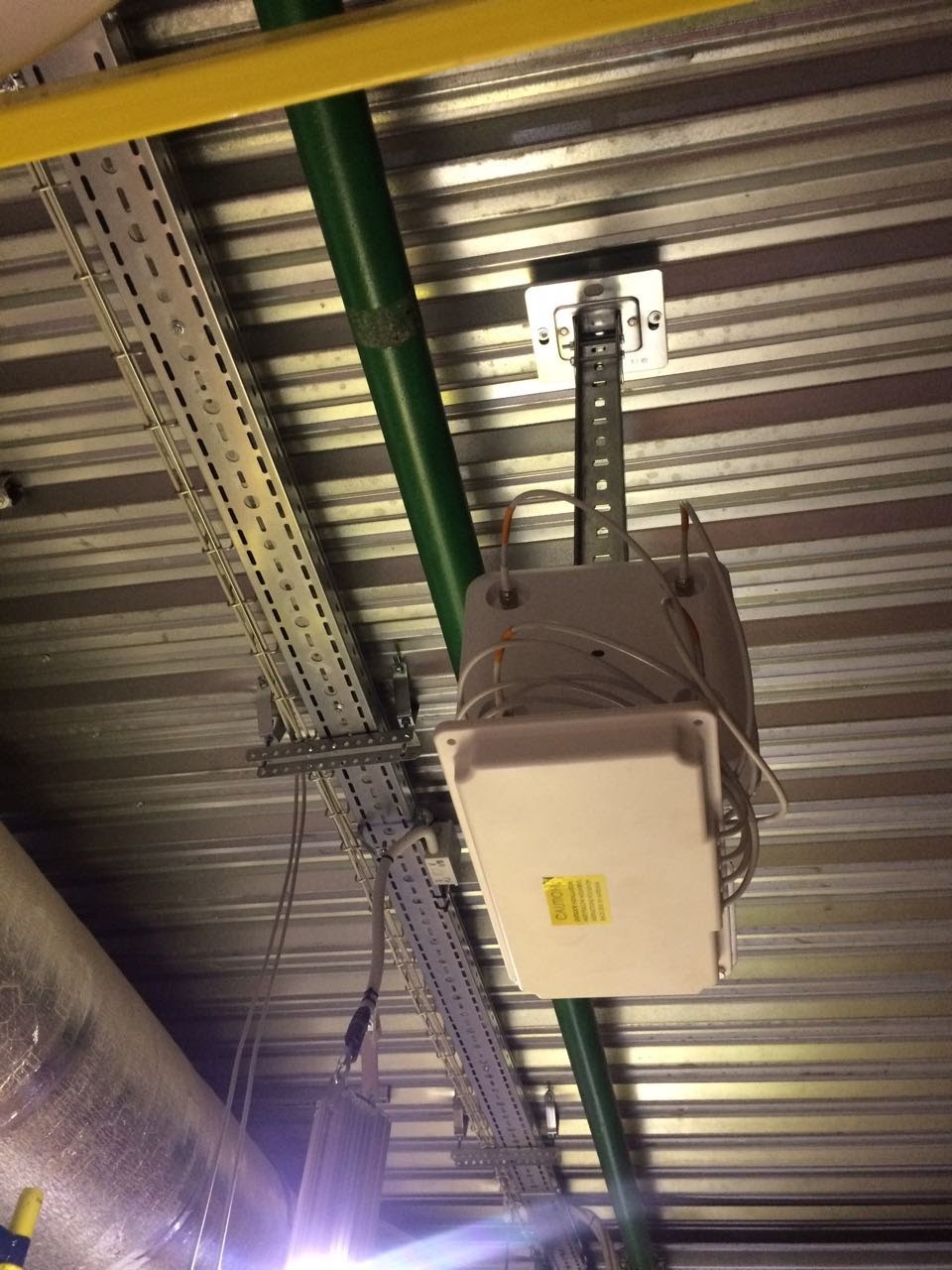
I had to hire spiers, hang. The main difficulties were with the installation, it was necessary to attract climbers. We tried to collect a tour, hang a point, move, etc. It turned out to be very long. Alpinists-climbers did quickly. Most likely they will also serve with their help, but at these points there are very good work statistics without failure.
Total
- Points: AP2802E - 286 pcs., AP3802E - 16 pcs., IW3702E - 6 pcs.
- Antennas: ANT2524V4C - 250 pcs., ANT2524DW - 80 pcs., ANT2566P4W - 32 pcs., ANT2547VG-N - 24 pcs.
- Two Cisco WLC 5520 controllers in a failover cluster.
- Cisco Prime Infrastructure Management and Monitoring System.
- Intrusion Prevention System in Cisco WIPS WLAN based on Cisco MSE.
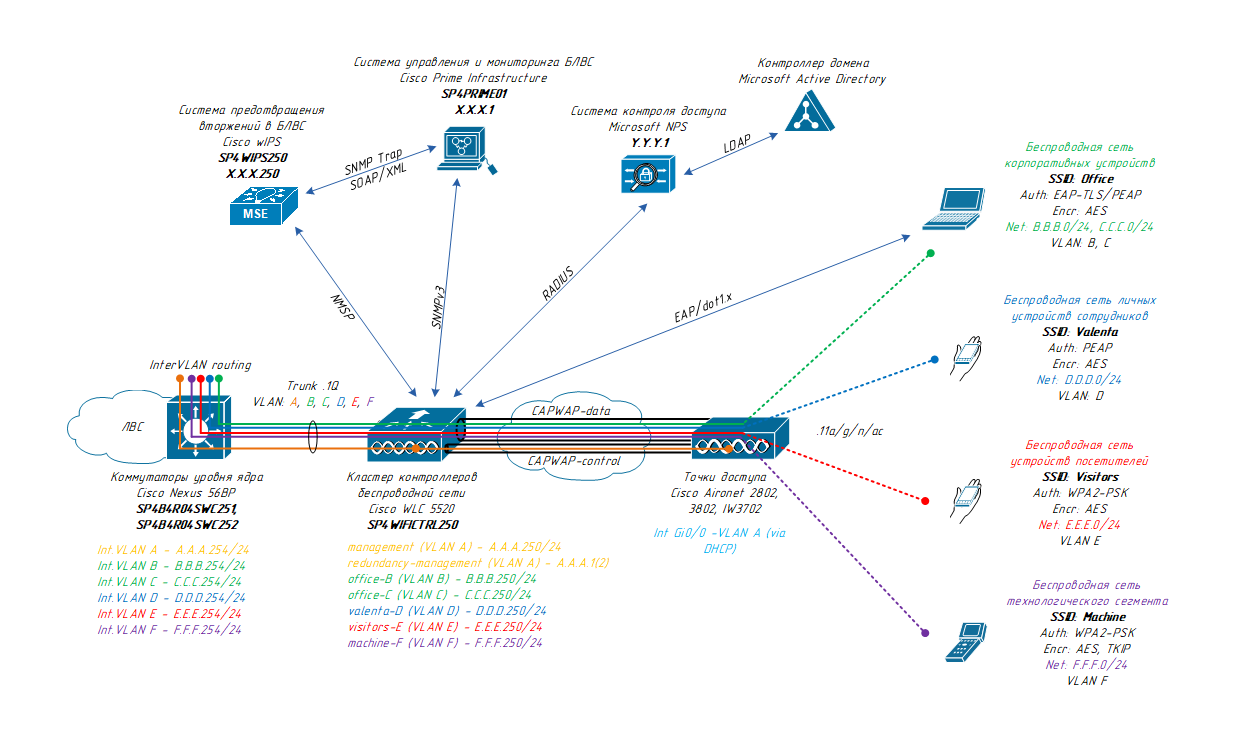
Why network? Office is simple and clear: mobile devices, mail. Warehouse - is the accounting of goods for receipt, data collection terminals: register movements, arrival and departure. As soon as they transfer the substance from the warehouse to the production, it is immediately necessary to check. Out of stock - immediately record. All this through the network, requires Wi-Fi. In manufacturing, according to the standards, all pharmaceutical equipment must have a network connection in order to transmit information about how many tablets and with which composition they have been made. This is a regulator requirement.
From 2018, a decree will come into effect in Russia, obliging pharmacists to provide consumers with all information about medicines - authenticity, shelf life, place of production, company data, composition, specific product series, the unique code of a single pack. You can find out this data by simply reading the bar code located directly on the package. Also, by reading the barcode, the pharmacist can easily check how many drugs are available at the pharmacy, how many are sold, etc.
The horizontal wiring is made of copper, everything is on the cross floor, then the star. The cable from the provider is optics. Provider two. LAN was designed entirely, the equipment was also purchased at once by one iteration.
Now all this is regularly operated.
Equipment
Cisco - the corporate standard of the customer, with the possibility of drilling the plate, the choice was no longer there, therefore the entire infrastructure was right on them.
Three models are used as wireless access points: Cisco Aironet 2802E, Cisco Aironet 3802E and Cisco Aironet IW3702-2E. External antennas, both ranges:
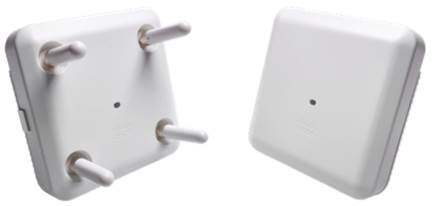
Cisco Aironet 3802 is used for high user concentration sites. They are IEEE 802.11a / b / g / n / ac (Wave 2), have MU-MIMO 4x4 with three spatial streams, support MRC and Cisco ClientLink 4.0 technologies, have an integrated spectrum analyzer ( CleanAir technology).
In locations where access points with aggressive and explosive environments are installed, Cisco Aironet IW3702 is used, which has an IP67 protection class and an operating temperature range from -40 ° C to 70 ° C:
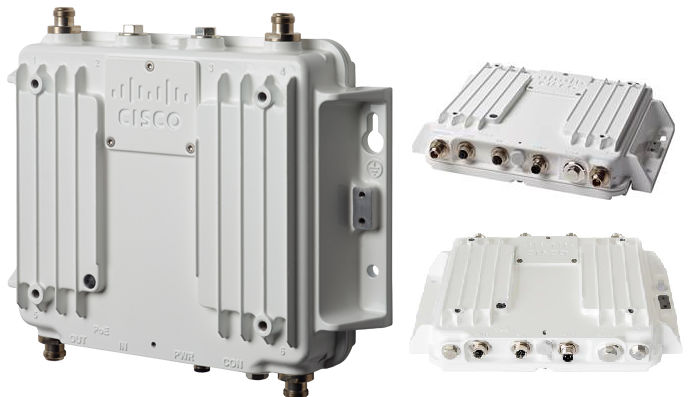 Cisco Aironet IW3702 Access Point Appearance
Cisco Aironet IW3702 Access Point AppearanceConnection of access points to a LAN is made via 1000Base-TX channels through LAN access level switches. The access points are powered by these switches using power supply technology through an unshielded IEEE 802.3at (PoE +) twisted pair cable.
The external antennas for Cisco Aironet 2802E and 3802E APs are omnidirectional AIR-ANT2524DW-R = or AIR-ANT2524V4C-R = and sector AIR-ANT2566P4W-R =. As external antennas for Cisco Aironet IW3702-2E access points, omnidirectional AIR-ANT2547VG-N is used. All models of the used access points and antennas operate in the 2.4 and 5 GHz frequency bands.
The appearance of the antenna AIR-ANT2524V4C-R =:
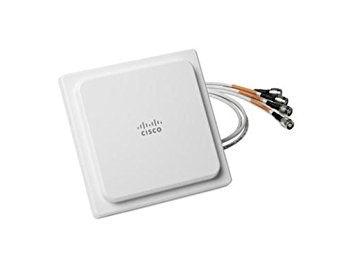
Antenna Characteristics AIR-ANT2524V4C-R =. Antenna type: omnidirectional patch antenna, 2.4 GHz antenna gain: 2 dBi, 5 GHz antenna gain: 4 dBi, 3dB beamwidth in the azimuth plane for 2.4 and 5 GHz: omnidirectional, beamwidth 3dB in elevation for 2.4 GHz: 69 °, beam width in 3dB in the elevation for 5 GHz: 60 °.
The appearance of the antenna AIR-ANT2566P4W-R =:
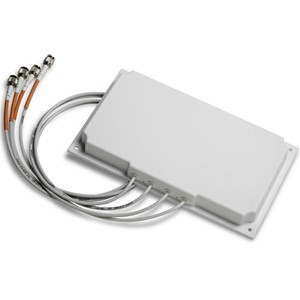
Antenna Characteristics AIR-ANT2566P4W-R =. Directional patch antenna, antenna gain 2.4 GHz: 6 dBi, antenna gain 5 GHz: 6 dBi, beam width by 3dB in the azimuth plane for 2.4 GHz: 105 °, beam width by 3dB in the azimuth plane for 5 GHz: 110 °, beam width on 3dB in elevation plane for 2.4 GHz: 65 °, beam width on 3dB in elevation plane for 5 GHz: 55 °.
Antenna radiation pattern AIR-ANT2566P4W-R =:
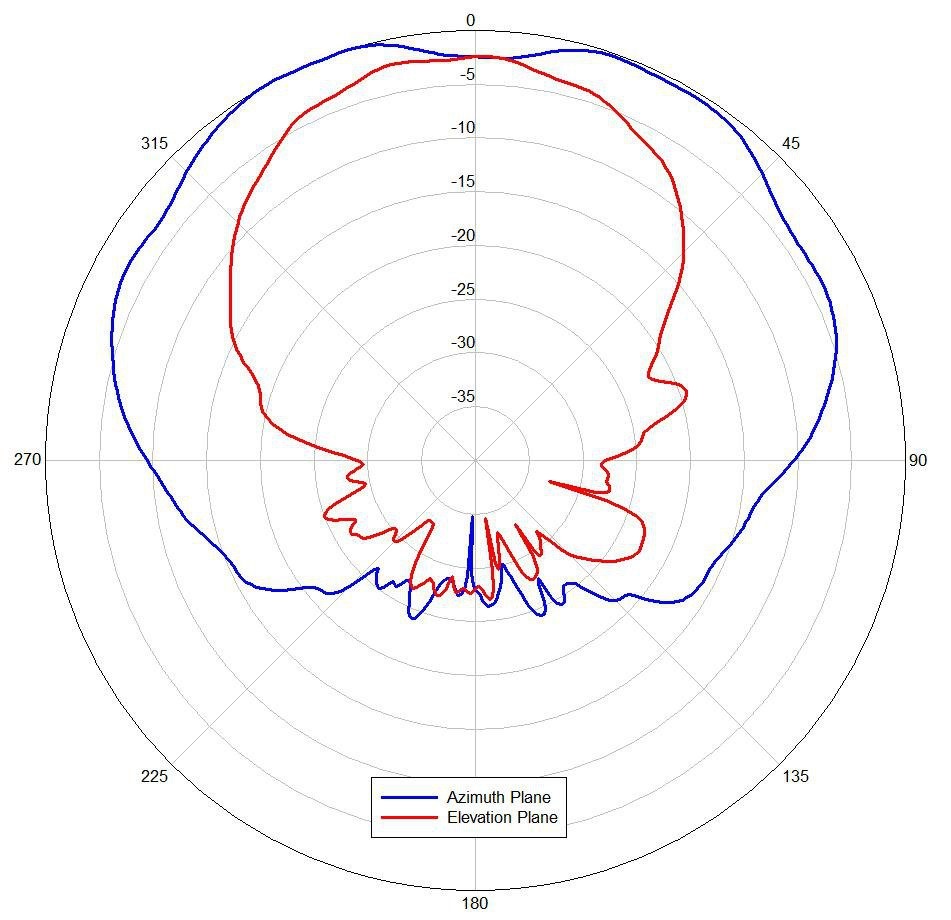
Access points are managed by a cluster of two Cisco Wireless LAN Controller 5520 wireless controllers. Access points are managed using the open protocol CAPWAP (RFC5415). Access points in this architecture are assigned only the functions of connecting wireless client devices and encrypting the transmitted data on the data link layer.

The disadvantage is that the failure of the controller leads to the failure of the entire wireless network. For this reason, controller redundancy is performed. The controllers are integrated into a failover cluster. In the event of a failure of the main controller, the access points go under the control of the backup controller without breaking the user session.
The main controller has a license for managing 300 access points. If the primary controller fails, this license is activated on the backup controller, which does not require the purchase of separate licenses for the backup controller. With the growth of the wireless network, the number of access points supported by the cluster of controllers can be extended by licenses to 1,500.
Centralized management and monitoring of WLAN devices are made using the Prime Infrastructure system installed on a virtual server based on VMware ESXi. This is to detect and localize equipment faults in the network, to obtain statistical information about the operation of the entire network or its individual components. It also allows you to reconfigure the network from a single console.
Links